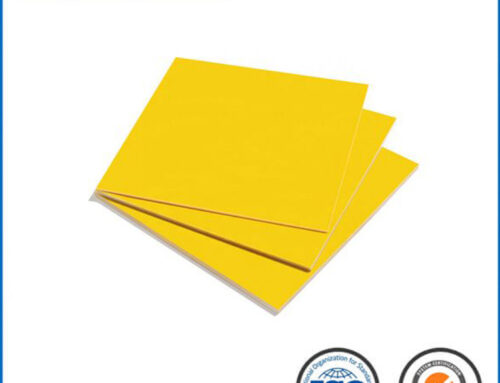G10 composite sheets, known for their exceptional strength and versatility, are key players in the realm of advanced laminated materials. This article aims to unveil the characteristics of G10 composite sheets, delving into their composition, mechanical strengths, and the diverse applications where these laminates shine. From aerospace components to high-stress engineering, G10 composite sheets stand as a testament to the capabilities of modern laminated materials.
1. Composition of G10 Composite Sheets: A Symphony of Materials
Layered Structure:
G10 composite sheets are crafted with a layered structure, typically consisting of woven glass fabric impregnated with epoxy resin.
The combination of glass reinforcement and epoxy resin creates a robust and well-balanced material.
Epoxy Resin Matrix:
The epoxy resin matrix in G10 provides excellent adhesion between the layers, contributing to the overall strength and durability of the composite.
This composition results in a material that excels in both mechanical and electrical properties.
2. Mechanical Strength: Navigating Rigorous Conditions
High Tensile Strength:
G10 composite sheets exhibit high tensile strength, making them resilient against applied forces and mechanical stress.
This property is crucial for applications where structural integrity is paramount.
Impact Resistance:
The impact resistance of G10 makes it suitable for applications in environments where mechanical impacts or vibrations are a concern.
The material maintains its structural integrity under sudden forces.
3. Electrical Insulation Properties: Enabling Precision in Electronics
Excellent Dielectric Properties:
G10’s excellent dielectric properties make it an ideal choice for electrical insulation applications.
The material’s insulation capabilities contribute to its extensive use in the electronics and telecommunications industries.
Printed Circuit Boards (PCBs):
G10 composite sheets are commonly employed in the manufacturing of PCBs, where their electrical insulation properties are crucial.
The material provides a stable and reliable substrate for electronic components.
4. Aerospace Applications: Elevating Performance in Flight
Aircraft Components:
G10 composite sheets find applications in aerospace engineering for crafting components that require a combination of strength and lightweight properties.
The material’s high strength-to-weight ratio contributes to fuel efficiency and overall aircraft performance.
Satellite Structures:
In the realm of space exploration, G10’s properties make it suitable for satellite structures.
The material’s stability and resilience are essential in the harsh conditions of space.
5. High-Stress Engineering: Resilience in Demanding Environments
Custom Insulating Components:
G10 composite sheets are utilized in high-stress engineering applications for fabricating custom insulating components.
The material’s durability ensures reliability in demanding environments.
Precision Machined Parts:
G10’s machinability allows for the production of precision-machined parts used in high-stress applications.
The material maintains its integrity under the demands of precision engineering.
Conclusion: G10 Composite Sheets – Pioneering Performance in Diverse Fields
As G10 composite sheets are unveiled, their strength and versatility emerge as key attributes in the world of laminated materials. From aerospace engineering to high-stress applications, G10 stands as a material that excels in providing the strength, durability, and electrical insulation required in modern engineering. In an era where materials must meet stringent demands across various industries, G10 composite sheets pave the way for innovation, offering a reliable solution for a spectrum of applications in the evolving landscape of advanced laminates.
More:




